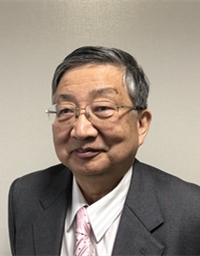|

|
Tsutomu Nakashima Ichinomiya Medical Treatment & Habilitation Center Nagoya University Professor Emeritus Topic:Management of Meniere’s disease: vision for the future |
The goal of the management of Meniere’s disease (MD) is to prevent or cure vertigo attacks, hearing impairment, and persistent tinnitus. Considering this, it is imperative to elucidate the mechanism of symptom appearance in MD.
Although the inner ear is essential in maintaining hearing and balance, the volume of blood flow in the inner ear is extremely small compared with the total cardiac output. The estimated blood flow volume in the inner ear of humans is about 1/1,000,000 of the total cardiac output (Nakashima T et al, Brain Research Reviews, 2003). This indicates that the inner ear, hidden deep in the temporal bone, is particularly small and it is difficult to elucidate the pathophysiology of the disease associated with it.
A characteristic feature of MD is endolymphatic hydrops (EH), which can now be visualized on magnetic resonance imaging (MRI) after intratympanic or intravenous administration of gadolinium contrast agents (Gd). To discriminate between MD and other diseases without EH, the MRI may be useful. The merits of the intratympanic method are the particularly small amount of administered Gd and the high concentration of Gd in the perilymph, barring cases in which the inner ear windows block Gd passage. The intravenous method is ordinary and does not employ off-label use of Gd. MRI is generally acquired 24 hours after intratympanic Gd administration and 4 hours after intravenous Gd administration. Since Gd was observed in the perivascular space of blood vessels in the brain on MRI taken 4 hours after the intravenous Gd administration, the glymphatic system excreting Gd from the brain has gained a significant amount of attention. This system plays an important role in CSF excretion and may be associated with excretion of the inner ear fluids.
Recent MRI obtained in persons with and without MD revealed that there are many ears with asymptomatic EH, and the MD symptoms appear after EH formation. Considering this, it is our understanding that the diagnosis of MD may be unsuitable and should be modified in the absence of EH (Nakashima T et al, Nature Reviews Disease Primers, 2016). MD symptoms demonstrated an immense degree of diversity. Recent MRI confirmed the presence of cochlear MD and vestibular MD, as defined by the American Academy of Ophthalmology and Otolaryngology in 1972. The Japan Society for Equilibrium Research described criteria similar to the cochlear and vestibular MD as cochlear and vestibular type of atypical MD (Equilibrium Research, 76, 233-241, 2017).
The relationship between the clinical symptoms and EH is still unclear. Future studies are warranted to understand the appearance of MD symptoms.
